#north eastern Thailand
Text
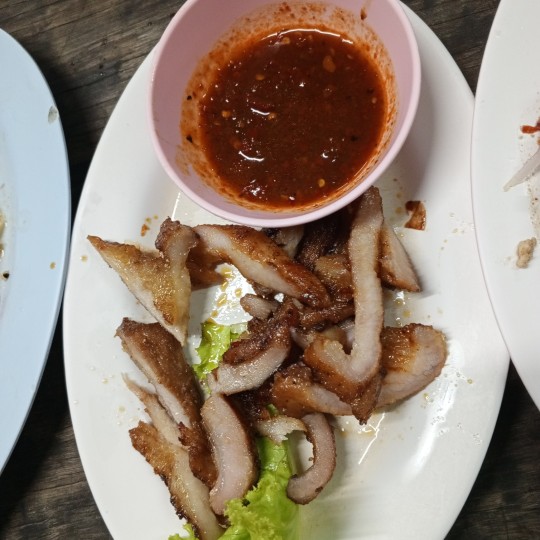
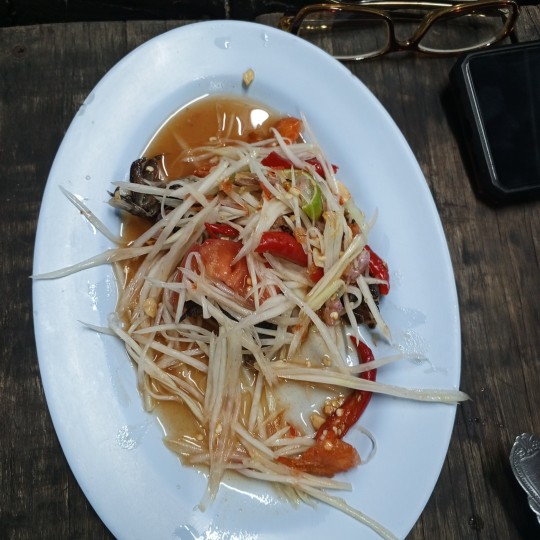
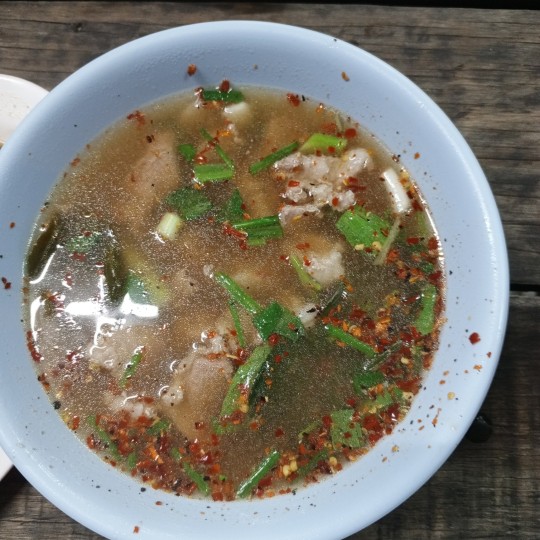

North eastern dishes *chef kiss*
3 notes
·
View notes
Text
The Top 15 Things to See in Thailand: Must-Visit Destinations
Plan your trip to Thailand with my list of must-see attractions. From vibrant markets to stunning national parks to ancient temples, experience the best of this enchanting destination.
With a rich culture and history, spectacular beaches, and some of the best food in the world, Thailand is one of Southeast Asia’s top travel destinations. From the incredible temples of Chiang Mai and Chiang Rai to the beautiful coastline of Phuket, Thailand really does have it all. In fact, there are so many things to see in Thailand that it can sometimes be a little daunting when planning a…
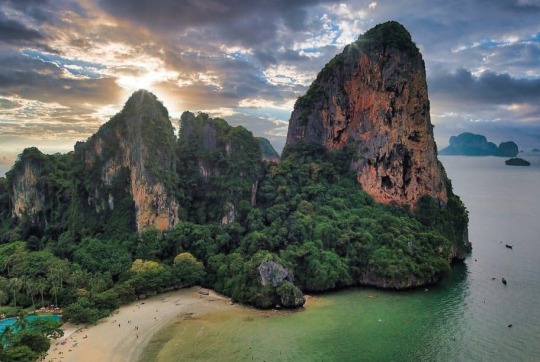
View On WordPress
#best places to visit in thailand#cool things to see in thailand#crazy things to see in thailand#must see things in thailand#places to go see in thailand#places to see in thailand#places to see in thailand for kids#places to visit in central thailand#places to visit in eastern thailand#places to visit in north east thailand#places to visit in thailand#places to visit in thailand chiang mai#things to do in thailand as a tourist#things to do in thailand backpacking#things to do in thailand for adults#things to do in thailand for couples#things to do in thailand with family#things to do in thailand with kids#things to see in thailand#things to see in thailand top 10#things you have to see in thailand#what to do in thailand for a month#what to do in thailand for a week#what to see in thailand#what to see in thailand best of the best#what to see in thailand in 10 days#what to see in thailand in 14 days#what to see in thailand in 7 days
0 notes
Text

Green magpie
The common green magpie (Cissa chinensis) is a member of the crow family, roughly about the size of the Eurasian jay or slightly smaller. In the wild specimens are usually a bright and lush green in colour (often fades to turquoise in captivity or with poor diet as the pigment is carotenoid based, slightly lighter on the underside and has a thick black stripe from the bill (through the eyes) to the nape. The wings are reddish maroon.
It is found from the lower Himalayas in north eastern India in a broad south easterly band down into central Thailand, Malaysia, Sumatra and northwestern Borneo in evergreen forest (including bamboo forest), clearings and scrub. - Wikipedia
82 notes
·
View notes
Note
In honour of George’s cookbook.... Food headcannons please! I’d love you to do one of the free cities like Myr
Order up while we wait another ten years for Winds… 👩🍳🥘🧆🍛


Myr, the fertile heel of Essos, reminds me a lot of Spain and the Iberian Peninsula in general. A port city with a warm climate good for growing. This means lots of staples like rice and other grains, and plentiful olives/olive oil as well. Seafood is a huge part of the diet too. This leads to large fried grain dishes topped with mollusks or fish or shrimp (like Paella), and versatile seafood soups and stews with plenty of spices being quite popular in Myr.
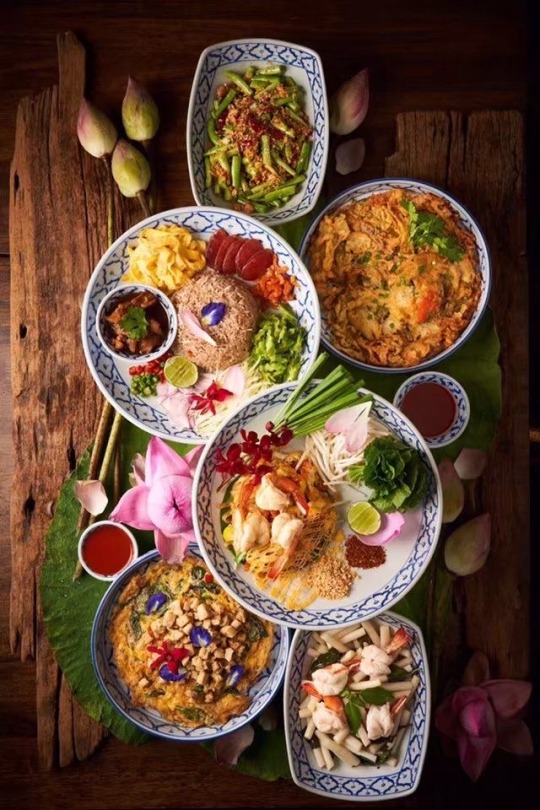
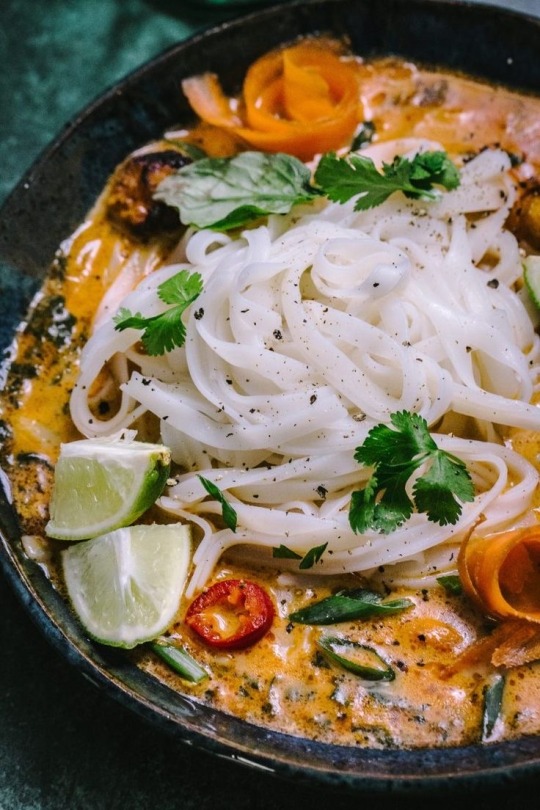
Volantis’ climate reminds me of Thailand, Vietnam, and other surrounding SEA countries, so let’s say the food is similar too. Plenty of rice and noodles to pour your main dishes on top of. Multiple courses consisting of spicy stews/curries, fried meat and veggie dishes, fish platters, and gelatinous rice dishes. Cold noodles and other chilled foods are very popular too, due to the relief it provides from the sticky heat
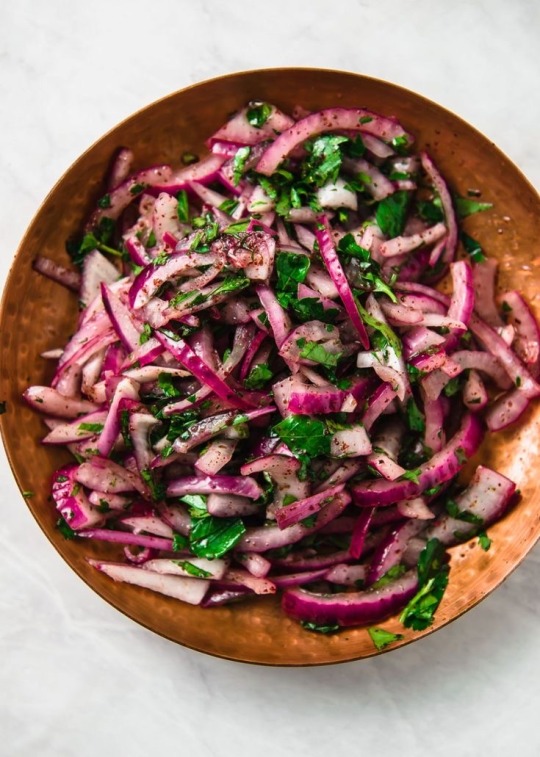

Lys is kind of a a mishmash of the Greek islands, so let’s go with classic Mediterranean foods. The island is very fertile, so I think they like to make use of their abundance of veggies. Cold salad-like dishes are very popular, drenched in oil and spices. Cooked vegetables are usually the main course, often stuffed with rice, chicken, or other filling foods. There are also dips and sauces bc they seem like dips and sauces ppl.
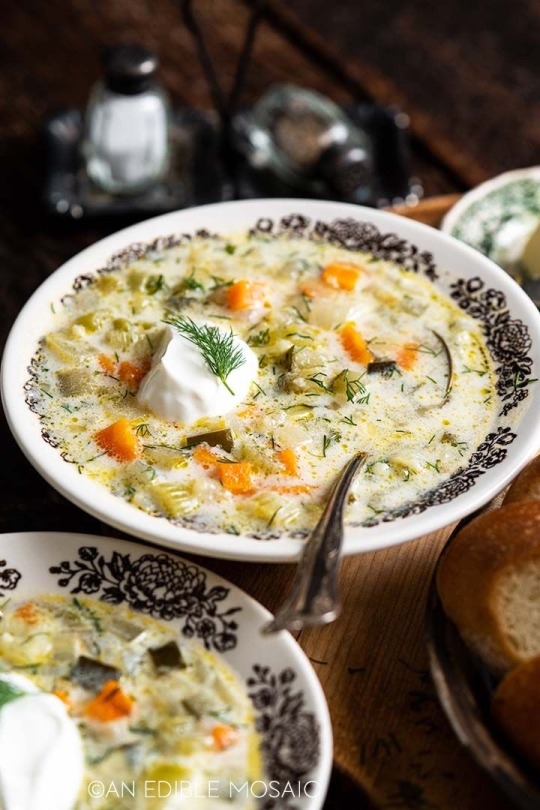
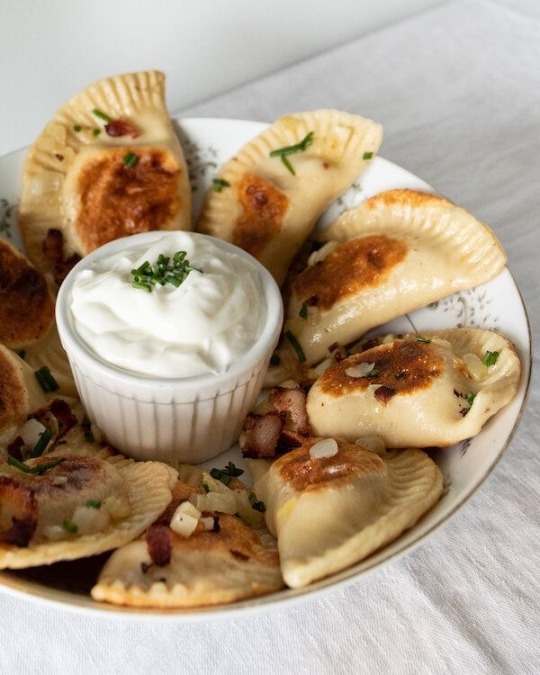
I know Braavos is supposed to be like Venice but it’s also cold and wet there so…✨Polish and general North Eastern European food✨ but it works hear me out. Multicultural blends of vegetable and fish stews that have changed over time to become uniquely Braavoisi. Veggies/fish/meet/fruit/literally anything wrapped in dough bc things wrapped in dough surpass borders. Overall just a mash of differing cultures the city was founded on plus the environment in which they live. (Shoutout @ludcake for the help 🫶)


Croatian food is notably heterogeneous so that’s why I think it’s perfect for Pentos. There’s no one major inspiration for its food, being a major trade city, its people take knowledge from whichever foreigner has pulled into port and uses it for their cuisine. Flavorful and random seafood stews. Simple cold salads with vinegar and potatoes. Very daring raw octopus dishes. The list goes on
#asoiaf#me when I put together cultural connections like location and food 🫶🕺✨#love when environment influences culture and I am aware of it
78 notes
·
View notes
Text
hello my dear followers and fellow shifters🌱
i kinda wanna know where you're all from !! so i made a survey ✨. fyi as I'm European myself, I divided Europe into regions to see where my fellow European followers are from hehe 😏 - i'm so curious!! (i would love to divide the other continents esp. Asia and Africa into regions too but sadly i have a limit of 12 answer options only on tumblr surveys... sorry 😿)
you can also write it in the comment section, maybe you'll find other shifters from your country!!







21 notes
·
View notes
Text
Info for writer in Thai series fandom: Cultural differences in each area
Depending on what we want to talk about, we can divine it in a variety of ways. Now that we're talking about culture, I'll use the one divided into four sections, as shown in this map.
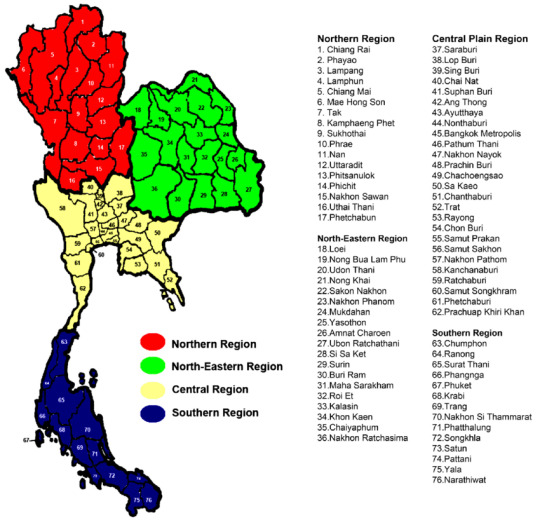
These four are Northern, Northeastern (Isan), Central, and Southern.
The majority of the series are set in Bangkok, which is in Central Thailand, so that is what you usually see.
Language
Our official language is Central Thai, but we have quite a lot of others. Northern Thai (Khammueang) from the north, Isan from the northeast, and Southern Thai from the south are the most popular in each area If we don't count the official one.
Kham Muang has a similar grammar, only a little different from the Central Thai language, but uses different vocabulary. Originally used in conjunction with the Tham Lanna script, which is the alphabet of the Lanna Kingdom that uses the Mon alphabet as a model, Kham Muang can be divided into Western Lanna accents. (in Chiang Mai, Lamphun, and Mae Hong Son) and an Eastern Lanna accent (in Chiang Rai, Phayao, Lampang, Uttaradit, Phrae, and Nan), which are partially different.
The Isan language, or Isan Lao language, is a local development of the Lao language in Thailand. Local speakers still think of it as Laotian. The Thai government recognizes this language as one of a Thai language.
Southern Thai has a high concentration of language speakers in the fourteen provinces of southern Thailand. Some are scattered in Prachuap Khiri Khan Province. Tanintharyi Region in Myanmar and around Kedah State, Perlis State, Penang State, and Perak State in northern Malaysia. There are about five million native speakers, and about 1.5 million use it as a second language. These include Chinese, Peranakan, Malay, Uraklavoi, and Mani ethnic groups.
They each have their own subset of accents and dialects.
We also have "copper language(ภาษาทองแดง)," which the Dictionary of Southern Dialects B.E. 2525(1982) mentions as a way to speak where the speaker is "speaking a central Thai language mixed with a southern language or speaking distorted," which includes anyone who uses the Thai language in a way that deviates from the standard set, not limited to being a person in any region or province.
I've heard a lot of stories about people from an area that doesn't use Central Thai that have misunderstand some sentences as being in the actual Central Thai language. But it's actually not, and it just contains Central Thai words, but not in the same way that people in Central Thailand would understand them as Central Thai. So when they moved to Central Thailand for any reason, they'd use them and expect Central Thai people to understand them a certain way, and they had to find out in an inconvenient way.
EX:pai song ไปส่ง
Central = to take someone to their destination but not stay with them after doing so.
Northern = to take someone to their destination, stay with them throughout whatever activity they intend to do there, then go back together.
As I said at the beginning, Central Thai is our official language, so that is the language that is taught in school. Other languages are usually taught by unofficial means, so it is not uncommon for the new generation to not be able to speak them fluently even when they come from a household that does. But sometimes everyone in the area speaks the other language, so even the teacher in school who is supposed to teach kids central Thai is not that fluent in it. It can be that case too.
As a person who only knows Central Thai, I can recognize some popular words in the others and understand some words that sound just a bit different, but if someone truly speaks in those languages, I will likely be unable to follow the conversation.
In the clip below, at 17.30, they use a word play with Isan and Central. Kha (ค่า) means worth, while Kha (ข่า) means galangal. In a Central Thai accent, these two words will have different tones, but in an Isan accent, Kha (ข่า) will sound just like Kha (ค่า) in Central Thai.
youtube
Food
Most northern dishes have a mild flavor. Fermented soybeans are commonly used in cooking. There are many types of chili paste. The carbohydrate sources are mainly glutinous rice.
Isan food has a distinctive taste that is salty from fermented fish sauce, spicy from fresh and dried chili, and sour from local vegetables such as tamarind. Isan people use pickled fish as a seasoning for almost all kinds of food, such as bamboo shoot soup, om, mok, and various chili pastes, as well as papaya salad, for example. The menu focuses mainly on seasonal vegetables. The carbohydrate sources are mainly glutinous rice.
The central region has long been a trading center and has been in contact with foreign countries for a long time, causing food to be influenced by many nations. And, as the King's residence during various reigns, the recipes have been developed to be meticulous. The taste of food will not focus on any particular flavor. It must be salty, spicy, sour, and sweet together to be considered good, variety of flavorings are used to achieve that. Coconut milk is used in many foods. The carbohydrate sources are mainly rice.
The southern region is the region with the most coastal areas. There is seafood as the main food. It is cooked with herbs to mask the fishy smell, especially turmeric. The taste is quite strong, and many dishes have vegetables to eat along with it to reduce the spiciness. The carbohydrate sources are mainly rice.
Geography
for geography, we usually divide it into six parts.

North
Most of the terrain consists of mountain ranges interspersed with plains and valleys.
The most important mountain ranges are Luang Prabang, Dan Lao, Thanon Thong Chai, Phi Pan Nam, Khun Tan, and Phetchabun Mountain Range.
Cities located in the basin area, such as Chiang Mai, are often facing serious air pollution problems.
The highest peak in the north and in the country is Doi Inthanon.
It is the headwaters of Thailand's four major rivers, namely the Ping, Wang, Yom, and Nan.
Central
It is a river plain. It is split into upper and lower central sections.
The upper central region has a high- and low-Undulating Plain landscape.
The Ping River and Nan River flow together at Pak Nam Pho, which is the source of the Chao Phraya River.
The lower central region is a wide plain formed by river sediments, suitable for cultivation.
Northeast
The terrain is mostly plateaus and mountain ranges.
There are Dong Phaya Yen Mountain Range, Phetchabun Mountain Range, Phanom Dong Rak Mountain Range, and San Kamphaeng Mountain Range.
It has the Chi and Mun rivers, which are important rivers that flow into the Mekong River.
Eastern region
The terrain consists of river plains and coastal plains.
There are Khao Banthat and Chanthaburi mountains in the middle of the region.
There are lined islands such as Koh Chang, Koh Kood, Koh Sichang, Koh Lan.
Prachinburi Province and Sa Kaeo are not connected to the sea. The region's other provinces all have seaports.
Western Region
The terrain is mountainous, with alternating plains and valleys similar to those in the north.
Phetchaburi and Prachuap Khiri Khan are connected to the sea.
Thanon Thongchai and Tanaosri are significant mountain ranges.
It is the origin of the Kwai Noi River (Sai Yok) and Khwae Yai River (Si Sawat), which converge to form the Mae Klong River in Kanchanaburi before flowing into the sea.
South
The terrain is mountainous along the peninsula.
The important mountain ranges are the Phuket Mountain Range, the Nakhon Si Thammarat Mountain Range, and the Sankalakhiri Mountain Range.
It is a natural border between Thailand and Malaysia.
Most of the rivers are short. The longest line is the Tapi River.
There is an open lake (lagoon), Songkhla Lake. It is one of the largest in Southeast Asia.
A few random examples for Tradition, Superstition, and Art.
Northern
If you remember the Yi Peng Festival in Chapter 6, it is a Northern tradition.
Tan Tung(ตานตุง)
Tan is to offer/dedicate
Tung is a kind of flag
Tan Tung is a form of merit making. A Buddhist ceremony. The flag that will be hung is the most noticeable difference from other region ceremonies.
Spirit
In the north, there are many spirits worshiped in a culture that people in other regions just not do.
Phi Arak(อารักษ์-guard) has a duty to protect the country and the community.
Phi Khun Nam(ขุนน้ำ-stream from a top of mountain) is responsible for providing water to the fields.
Phi Fai(ฝาย-weir,dam) is responsible for protecting the city of Weir.
Phi Sop(สบ-meet) Nam(น้ำ-water) or Phi Pak Nam(ปากน้ำ-estuary, mouth of a river) are responsible for protecting the area where two rivers meet.
The word "phi(ผี-ghost)" has a negative connotation in central, but in the north, it refers to all spirits, including the sacred spirit or god.
Life Prolonging Ceremony
It means to make one's life auspicious, to live comfortably and free from all diseases, and to prosper forever.
If you want to search for their traditional dance, ฟ้อน (Fon) is the word.
Northeastern (Isan)
Phaya Tan(พญาแถน)
Phaya Tan is a word for gods in the Isan region. The highest Tan is called Tan Luang and is believed to be Indra in other regions.
Naga
Naga is a prominent figure in Isan. I have been repeatedly told that many Isan people believe in Naga existence.
The Boon Bang Fai, or Rocket Festival, is a large festival held to honor Phaya Tan, with an origin story involving Naga.
People from Isan considered the time this festival occurred as a time they should return home and meet with their family and friends in their hometown.
There are glowing balls that occasionally rise from the Mekong River that people call Naga fireballs. They are believed to be fireballs that Naga spits out from under the river.
หมอลำ-Mor lam is a type of music from Isan that is a big genre of music in Thailand.
If you want to search for their traditional dance, เซิ้ง (Serng) is the word.
Southern
Nang Talung-หนังตะลุง is a type of shadow play, one of the local performing arts of the South.
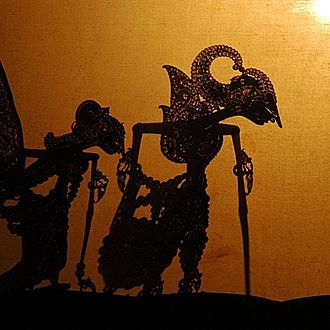
Nora โนรา
Nora dance, in my opinion, is both an art and a superstition. I'm not sure where it came from, but I've heard about how some Nora practitioners treat it like mediumship, saying that if they are chosen by the spirit, there is no way to say no (to the way of living as a Nora performer).
In Pattani, Yala, Narathiwat, and Satun, as well as parts of Songkhla and Chumphon, the majority of the population is Muslim. Because Thai Muslims and Thai Buddhists have some cultural differences, there are some noticeable differences in the area where Thai Muslims are more prevalent when compared to the rest of the country. However, even when they are a minority in other areas, they are still dispersed throughout the country, with the largest number of residents in Bangkok, so I would say that the culture in those areas will likely still be familiar enough to most people.
In the south, saltwater fisheries are much higher than in other regions due to the geographical location that is adjacent to the sea on both sides. This has resulted in differences in eating culture and other aspects of daily life in the South.
Most of the things you see in the series and from me are based in central Thailand, so I will skip it.
Example :
The protagonist of Siew Sum Noi is from Isan, as is Vee from Love Mechanics.
Country Boy takes place in the north.
Sky in Your Heart and A Tale of a Thousand Stars begin their story in Bangkok and then move the location to the north.
I Told Sunset About You is set in the South.
Index
76 notes
·
View notes
Text
Doodles! Kaveh trying out Phin, then Al Haitham just intervenes out of spite and blow some badass tunes with a Khaen
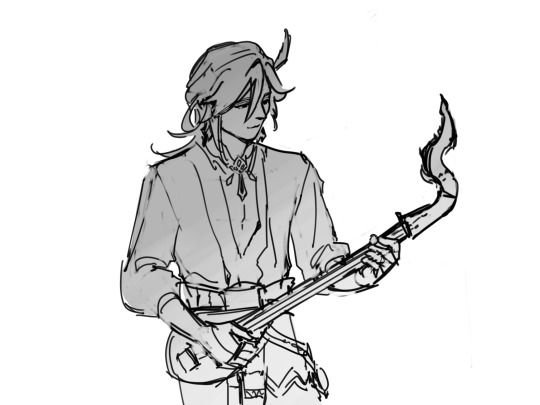

my guys are having fun and annoyed at each other lol.
Trivia Time!
said music instruments are from isaan (north-eastern) region in thailand 😁
for people who are curious on how these sound like, i have an example that i enjoy listening to lately (they actually start playing around minute 2:20)
youtube
coincidentally there are 4 people in this video. it reminds me of the sumeru boys 😂😂
from our left to right (names are romanized by me. i actually dont know their english spelling):
1. Noshanon (white shirt guy) - plays Phin
2. Kru Bass (or Best? im not sure? its a name though) - blows Vot/Wot
3. Eed Ponglang Sa-on (ponglang sa-on is a band name) - plays Bass
4. Wik(?) Ponglang Sa-on - blows Khaen
#my art#genshin impact#isaan stuff? 🤔#kaveh#al haitham#not ship bc i adore them in my own way#my headcanon if the four sumeru boys play these instruments:#kaveh - phin#tighnari - vot#al haitham - bass (if any of you ever see haitham & cyno band au then you’ll get it)#cyno - khaen#doodle#Youtube
42 notes
·
View notes
Text
A news story which has not gotten the attention it deserves here in North America this week is the intense heatwave in South and Southeast Asia. While Trump chants "drill drill drill" what's really needed is to get the planet to chill chill chill.
Thailand is reeling under the grip of a severe heatwave with temperatures soaring to record highs in some areas and authorities warned of harsher weather in the coming days.
More than three dozen districts across Thailand’s 77 provinces have seen record temperatures in April, generally the hottest month of the year, with new highs beating records held as far back as 1958, according to data from the Thai Meteorological Department.
Temperatures have topped 40 degrees Celsius (104 Fahrenheit) in 26 provinces this month, according to the agency. The northern province of Lampang has seen the highest temperature so far this year at 44.2 degrees, just shy of the highest temperature ever recorded in Thailand – 44.6 degrees – that was last seen in 2016 and 2023.
Thailand is roughly in the center of the affected area.

The Philippines, at the eastern end of the heatwave, is seeing a strain on its power supply.
Meanwhile, parts of the Philippines face potential disruption to electricity supplies as an intense heatwave fuels cooling demand and leaves power systems “overloaded”, according to President Ferdinand Marcos Jnr.
Schools in the Philippines have suspended in person sessions. There is talk of returning to an academic calendar which sees the school year end in March.
Students suffer in wilting heat, thwarting education efforts
In this audio report from ABC Australia, we hear how the current heatwave is closing in on the limit of human survivability in some areas.
Dangerous heatwave sweeps south east Asia
Any politician preaching increased use of fossil fuels is a danger to the planet.

The transition to sustainability may occasionally be bumpy but any other road leads to climate dystopia.
NOTE: For all you Fahrenheit fans, here's a quick way to convert temperatures mentioned in some of the links.
Celsius to Fahrenheit Conversion | (°C to °F)
BTW, Asia won't be the only place hit with adverse climate incidents this year. The 2024 Atlantic Basin hurricane season is predicted to be well above average in number of storms.

#climate change#the environment#heatwave#south asia#southeast asia#philippines#thailand#limits of human survivability#fossil fuels#republicans#donald trump#drill drill drill#trump digs coal#atlantic gurricane season#election 2024#sustainable energy#vote blue no matter who
7 notes
·
View notes
Text
November 16th, 2023


Chinese Mantis (Tenodera sinensis)
Distribution: Native to China, Japan, Korea, Micronesia and Thailand. Found throughout eastern North America, plus scattered areas in the west.
Habitat: Usually found on tall plants or grasses, especially on areas with a view. Found around houses, grasslands, pastures, agricultural and open areas.
Diet: Carnivorous generalists; feed mainly on other insects and spiders, such as hornets, grasshoppers, butterflies and katydids, but have also been seen consuming small reptiles, amphibians and hummingbirds (though this is likely an uncommon occurence!).
Description: These large mantises were introduced to North America in the 1890s, and have since become well-established throughout the eastern half of the continent. Despite being a non-native species, the Chinese mantis is sometimes deliberately released into gardens as a method of biological pest control, which isn't a very good idea. While they do consume undesirable species, they're also indiscriminate eaters which also eat beneficial insects, like pollinators. Their over-abundance and general success has come at the cost of other native mantis species, whose populations have been declining throughout North America.
Because of its particular style of hunting, standing very still before swiping out at its prey when it draws near, two separate unrelated martial art styles have been developed based on the Chinese mantis: the praying mantis kung fu, developed in eastern China in the mid-1600s, and the southern praying mantis kung fu, developped by the Hakka people of southern China.
(Images by Dave Parker and Luc Viatour)
15 notes
·
View notes
Text
Corvid Tournament Corvus Bracket Round 3: Collared Crow vs Eastern Jungle Crow


Collared crow (corvus torquatus): The collared crow is a mid-sized bird at 52-55cm/20-22in long. Is easily distinguished by its white coloration pattern that wraps around the back of its neck, shoulders, and chest, leaving a black strip down its front, hence its name. It is otherwise black. Its territory is mostly eastern China, though it does not live North of Beijing. It is a true omnivore and has been shown to adapt to urban environments. Its conservation status is “vulnerable” (“near threatened” in China as of 2018) due to reduced food accessibility caused by increased pesticide use. They are currently under observation of the World Wildlife Fund, though aside from this, large scale conservation efforts have been implemented.
Eastern jungle crow (corvus levaillantii): The eastern jungle crow is also a mid-sized bird similar to the Indian jungle crow but distinct by its greyish-black plumage and arched upper beak. It is found throughout China, Bangladesh, India, Myanmar, Nepal, Bhutan, Thailand, and is also considered invasive in Sri Lanka. Its conservation status is not listed.
5 notes
·
View notes
Text
By: Keith Woods
Published: Jul 2, 2023
A look at slavery outside of the West
It has become popular to blame White people for slavery, to the point that many actually believe slavery was invented by or exclusively practiced by Europeans.
But the history of slavery outside the West is far more brutal.

The Arab slave trade emerged in the 7th century, 10 centuries before the Atlantic slave trade
Arabs sold Africans to the Middle East for a variety of jobs such as domestic work or harem guards - castrating male slaves was common, causing over half of males to bleed to death

The Arab slave trade was particularly brutal: it's estimated that 3/4 captured slaves died before they reached the market for sale
Historians estimate that between 10 and 18 million people were enslaved by Arab slave traders, including women and children taken as concubines.
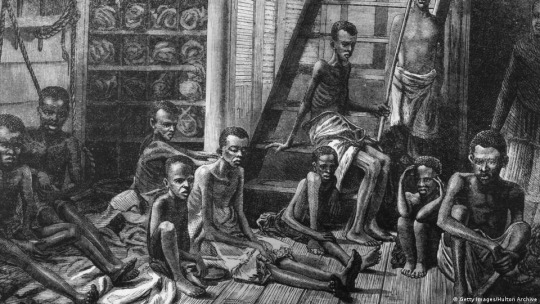
Arabs did not create the slave trade out of nothing, in fact, enslaving conquered tribes was already common practice in Central Africa when they arrived.
The West African Songhai Empire relied heavily on captured slaves in all levels of society, even as soldiers.

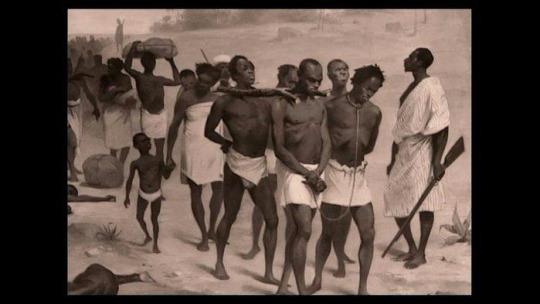
Africans themselves also played a large role in facilitating the trans-Atlantic slave trade.
African tribes conducted raids on rival groups to provide slaves for sale. African middlemen facilitated trade between European traders and African suppliers.



The Arabs also had a slave trade in Europe. Estimates are that up to 1.25 million Europeans were enslaved by Barbary pirates, who would raid villages in coastal countries like Italy, France, England and Ireland, bringing them to North Africa for sale.

In some cases entire villages would be captured, such as the Irish coastal village of Baltimore, entirely raided in 1631.
These slaves faced a brutal future, engaging in hard labour or sexual servitude, and spending nights hot and overcrowded prisons called bagnios.



Many slaves captured by Barbary pirates were sold eastwards into the Ottoman Empire. Slavery was central to the Ottoman Empire, most towns had dedicated slavery markets called Yesirs.
Slaves came from Africa, the Caucasus, the Balkans and Eastern & Southern Europe.

Sexual slavery was a big part of Ottoman society. Slavic women were popular slaves, and Köçeks became a popular source of entertainment in the 19th century:
These were young boys, usually from European backgrounds, who were circumcised, cross-dressed and trained as dancers.


Hereditrary slavery is recorded in China dating back to the Xia Dynasty in 2100 BC. Africans purchased on the Silk Road were used as a sign of wealth.
After Chinese law began to treat women as property around 1000AD it was common to sell daughters and sisters into slavery.
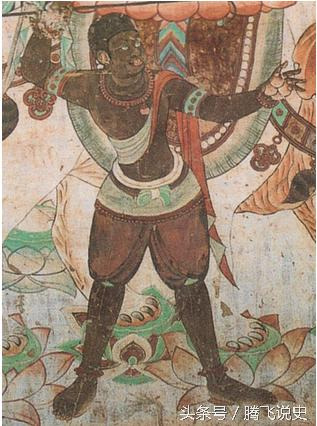

The Mongols enslaves tens of thousands of Chinese as punishment for resistance.
In the post-Mongol Ming Dynasty, thousands of slaves were employed to do bureaucratic jobs for the government, and rich families also employed thousands of slaves to perform menial labour.

Slavery was common in American civilizations like the Aztec and Maya
Among the Aztecs, slavery was a punishment for a variety of crimes or even failure to pay taxes. Husbands and wives sold each other in times of economic hardship. Slaves were identified by wooden collars.
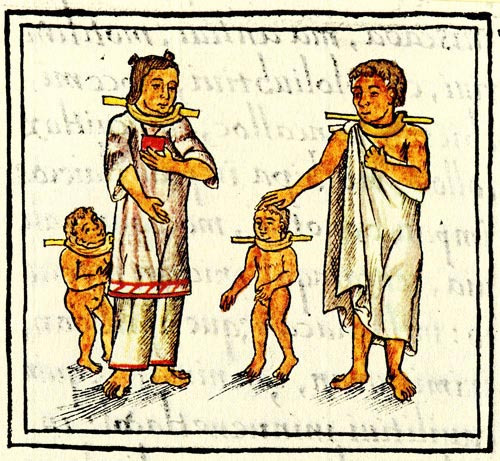
Slavery was also common practice in the civilizations of South-East Asia.
The Khmer Empire had a massive slave class that did much of the work building monuments like Angkor Wat. Historians estimate 25-35% of the population of Thailand/Burma were slaves in the 17th century.
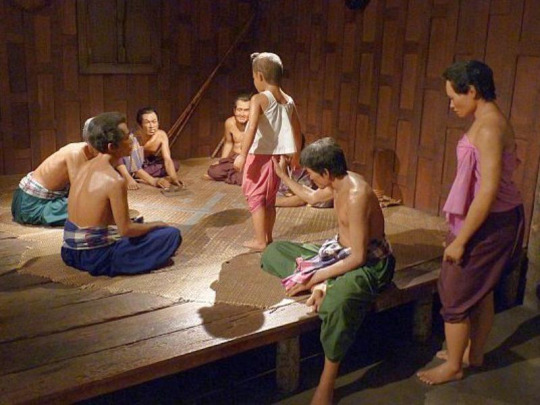

Slavery also existed among Native American tribes. Slavery was common practice among Northwest tribes like the Tlingit, for whom one third of their population during the mid-1800s were slaves.
Various tribes practiced debt-slavery and enslaved captives of other tribes.


The only difference between these cases of slavery and that practiced by Europeans is that Europeans abolished slavery on humanitarian grounds, and spread this across the globe.
The intense focus on the White role in slavery is a product of widespread Anti-White animus.

==
American exceptionalism comes in two varieties: "we're exceptionally virtuous," and "we're exceptionally evil."
Both rely on lying about or being ignorant of history.
https://www.nationsreportcard.gov/dashboards/schools_dashboard.aspx

And that's just American history. Can you imagine world history?
#Keith Woods#slavery#history#history of slavery#exceptionalism#American exceptionalism#inverted exceptionalism#religion is a mental illness
26 notes
·
View notes
Note
Why is Jessica often seen with her hair covered? Especially in the second movie of course but she does wear a veil in the first too. Is it a Bene Gesserit rule? And if it is, is there an explanation to why? They’re mostly raised to seduce men so modesty doesn’t sound like a high priority.
I'll quote here the costume designer for Dune and Dune: Part Two here, Jaqueline West. As I understand the main point (in the movie) is that the costumes for Benne Gesserits are based on medieval nuns hence the veils.
Lady Jessica goes through a lot in this film after arriving in Arrakis and fleeing to the Sietch. How do her costumes chart her transformation from where we left off in Part One?
When we left her in Dune: Part One, she was still in her stillsuit and dessert wrap. When she gets to the Sietch, she starts dressing like the Fremens—in a more humble style with the rougher linen, almost djellaba-esque long gowns, and wrapped veils, all printed by Matt.
Once Lady Jessica becomes the Southern Reverend Mother, her face is tattooed over with the prophecy, and her outfits are elaborate but in earthy tones. What went into this collection?
Working with sketch artist Keith Christiansen, we started looking at the Egyptian sarcophagi since the Bene Gesserits are ancient nuns or heads of their particular sect. The sarcophagi are so elaborate, and their shapes are quite beautiful and age-old, with magnificent carving in the details. We used many layers of different fabrics—hand-painted velvets, hand-painted silks, and tapestry fabrics. We purchased all the fabrics, mainly from Italy and some from Thailand and Eastern Europe, and pieced them together into these incredible, ornate patchworks. We painted, dyed, and printed them all in-house.
What about the elaborate headdresses on Lady Jessica and the other southern Reverend Mothers?
The jewelry came from all over the Middle East and North Africa. I had shoppers in bazaars in Istanbul, Morocco, and Egypt. Then, we disassembled them, and my jewelry maker put everything back in a new way to make it look futuristic. We pieced together different necklaces for each of the Reverend Mothers. We took all of that detail from the sarcophagi and made them come alive.
Lady Jessica and the southern Reverend Mothers dress differently from the ones we saw in Part One, i.e., Reverend Mother Mohiam’s entourage of Bene Gesserit sisters, who were all in black.
Mohiam comes from the Emperor’s world. You don’t wear black in the desert, or you’re going to bake. These women have navigated for many, many years through the different desert cultures within the Fremen world. I imagined Fremen sects in the south were different from those in Northern Arrakis. Even though they’re all Reverend Mothers, they are on a different planet. So, I wanted to distinguish them with color, but their shapes are very similar.
Yes, their silhouettes and head coverings have a similar look.
They’re all based on Medieval nuns and the women of the tarot cards, particularly with the Queen of Swords.
6 notes
·
View notes
Text
Regions hit by catastrophic flooding just in the last week or two:
Northeast Nigeria, Far North Cameroon, southern Chad, central-southern Niger, South Sudan, Lower Austria, northeast Czechia, western Slovakia, southern Poland, eastern Romania, southwest Moldova, northern Italy, south-central Mexico, central-east coastal China (Shanghai), northern Vietnam, northern Thailand, central Myanmar, northern Laos…
6 notes
·
View notes
Text
Smol Tidbit:
While the far Eastern parts of the Vanystean Empire are coded to be like some of the North and South East Asian countries such as South Korea, Japan, China, Philippines, Malaysia, and Thailand; the far Northwestern region is more indicative of Western European countries like the United Kingdom, Ireland, Ausria, Germany, and France
8 notes
·
View notes
Text

Som Tum: various types of delicious Thai papaya salad
Som Tum or Thai spicy papaya salad is a popular Thai dish originated from north eastern Thailand. The dish is famous for being rich in flavour i.e. a mix of sweet, spicy and sour. There are many types of Som Tum that you may find in Thailand, or at any Thai restaurant. Therefore, it is important to know your Som Tum before making any order! Also, you need to pay attention to some ingredients in Som Tum as it may contain ingredients like peanuts or shrimps which some people are allergic to). In this article, we will be covering different types of Som Tum and finish it off with whether the dish is vegetarian friendly.
Different types of Thai papaya salad
The main ingredient of som tum is the shredded green, raw papaya. Other common vegetables include tomatoes and green beans (sometimes carrots as well). The dish derives its taste from garlic, chili, tamarind, lime, fish sauce and a bit of sugar.

Som Tum Thai is the first variation of som tum that we will cover. It has unique ingredients including dried shrimp and peanut on top of your usual raw papaya, tomato and green beans. Som Tum Thai is common in central Thailand so you will be able to find it anywhere in Bangkok.

Som Tum Phu or crab Som Tum is a variation where either preserved sesarma crab or flower crab is added to Som Tum dish to enhance the flavor.
Som Tum Lao or Som Tum Pla Ra is characterized by a special ingredient called “Pla Ra” or fermented fish. This type of Som Tum with a small portion of fermented fish will have a stronger smell and flavor compared to other types of Som Tum. For those who enjoy the fermented fish enhancement, they will quote this is the best type of Som Tum. On the other hand, others who are not a fan will find the dish pungent. It is either you love or hate it.

Som Tum cucumber salad replaces shredded green papaya with refreshing sliced cucumber for its main ingredient. Some variation of the som tum cucumber salad also add Thai sausage, shrimp or grilled pork into the mix which make the dish interesting.

Som Tum with fruits uses fruits as the main ingredient instead of shredded raw papaya or cucumber. Common fruits you will find in this type of Som Tum include apple, guava, pomelo and corn (although corn is not exactly a fruit). Some recipes will also add dragon fruit, grape, kiwi, pineapple. Actually, you can add any fruit you like, but the rule of thumb is to avoid adding watery fruit like watermelon. The reason being is obvious, you do not want your Som Tum too watery.
How to enjoy a meal with Thai papaya salad
You can have Som Tum on its own, but usually Thai people enjoy Som Tum with a number of other dishes. The most common one is to have sticky rice or kanom jeen as carb companion for Som Tum. Other than that, you can add some protein source like grilled/fried chicken or pork neck (which go really well with Nam Jim Jaew dipping sauce). This is because the typical Som Tum does not have any meat inside. Som Tum is already quite rich with vegetables but usually there are other raw vegetables and herbs accompanying this dish. This can include cabbage, basil leaves, green beans and cucumbers.

Is Som Tum vegetarian friendly?
If you are a strict vegetarian then the answer might be no, as most Som Tum dishes contain fish sauce and Som Tum Thai contains dried shrimp. However, some shops offer vegetarian Som Tum, for example Som Tum Thai without dried shrimp. Otherwise Som Tum with cucumber or fruits are generally vegetarian friendly.
Find out more about the Thai papaya salad calories in our dedicated article!
2 notes
·
View notes
Note
I was looking through my many moth books spans I found this!

Acme shachia gigantea is a moth of the family Notodontidae first described by Henry John Elwes in 1890. It is found in Pakistan, north-western India, Nepal, north-eastern India, Myanmar, northern Thailand, south-western China, Taiwan and northern Vietnam.
Cool! Also, @acmeofficial please stop being everywhere I’m at. You literally have a moth named after you.
17 notes
·
View notes